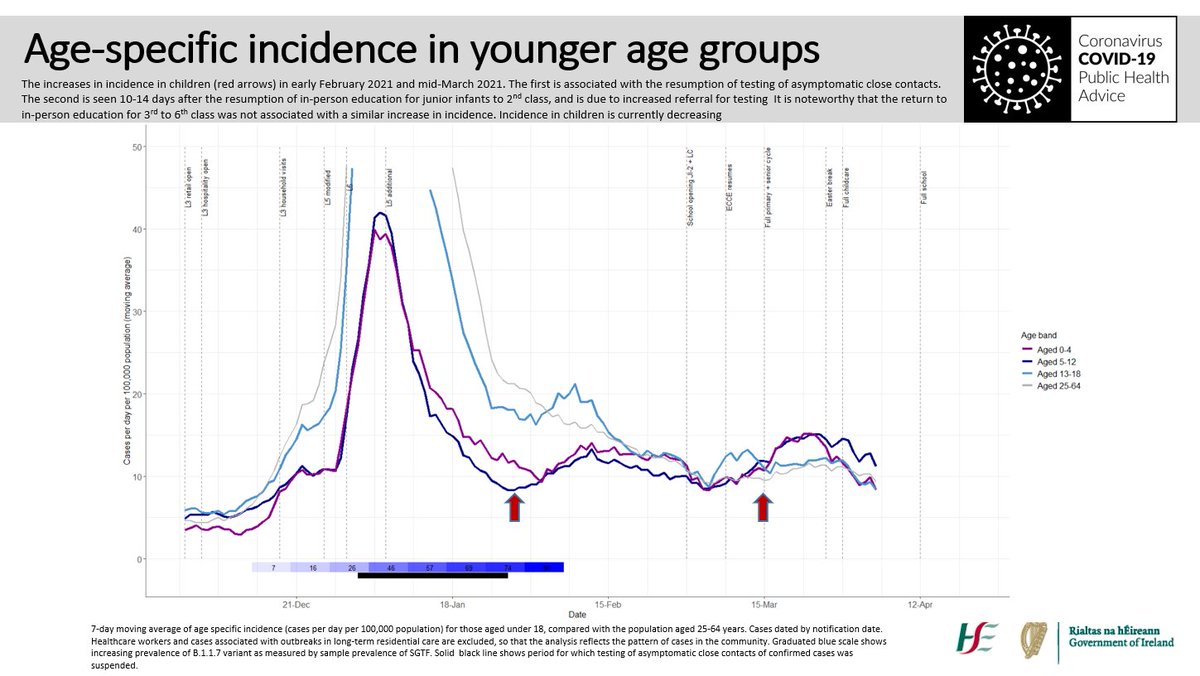
The data are saying one thing: be very cautious faced with the delta variant. We are seeing a very steep rise in cases, comparable to or steeper than the early part of previous waves. 1/9 

This will not translate into severe disease and mortality in the same way as before, but numbers in hospital are rising: 101 this morning. The ratio of admissions to cases is 16 admissions per 1000 cases, overall we are tracking 15-25 admissions per 1000 cases. 2/9 



Weekend effects typically give low case counts on Sunday and early in the week; case counts over the next few days will be an important indicator. 3/9 

Growth rate is currently 5-7% per day, which would give a doubling time of 10-15 days; these estimates are quite unstable given the very rapid increase in cases in the last few days 4/9 

While cases are concentrated in older teenagers and younger adults, we are beginning to see an increase in incidence across other age groups, including those aged 65 and older. 5/9 



Incidence in those aged 16-29 years is rising rapidly, is higher than we have seen since end of January 2021, and higher than the October 2020 peak. 6/9 



Incidence varies by county, but most counties have a 7-day incidence significantly greater than 50% of their 14-day incidence, indicating rapid growth in those counties. 7/9 

We need to limit transmission: a wave of infections in young people will cause severe illness and long-term complications in a sizeable minority, and will break through the protection of vaccination to cause dangerous infections in older and vulnerable people. 8/9
We know what we need to do: support those not yet fully vaccinated to socialise safely outdoors and distanced, and we all need to self-isolate and seek a test if symptomatic, avoid crowds and crowded spaces, and take the basic public health and hygiene precautions. 9/9
• • •
Missing some Tweet in this thread? You can try to
force a refresh























